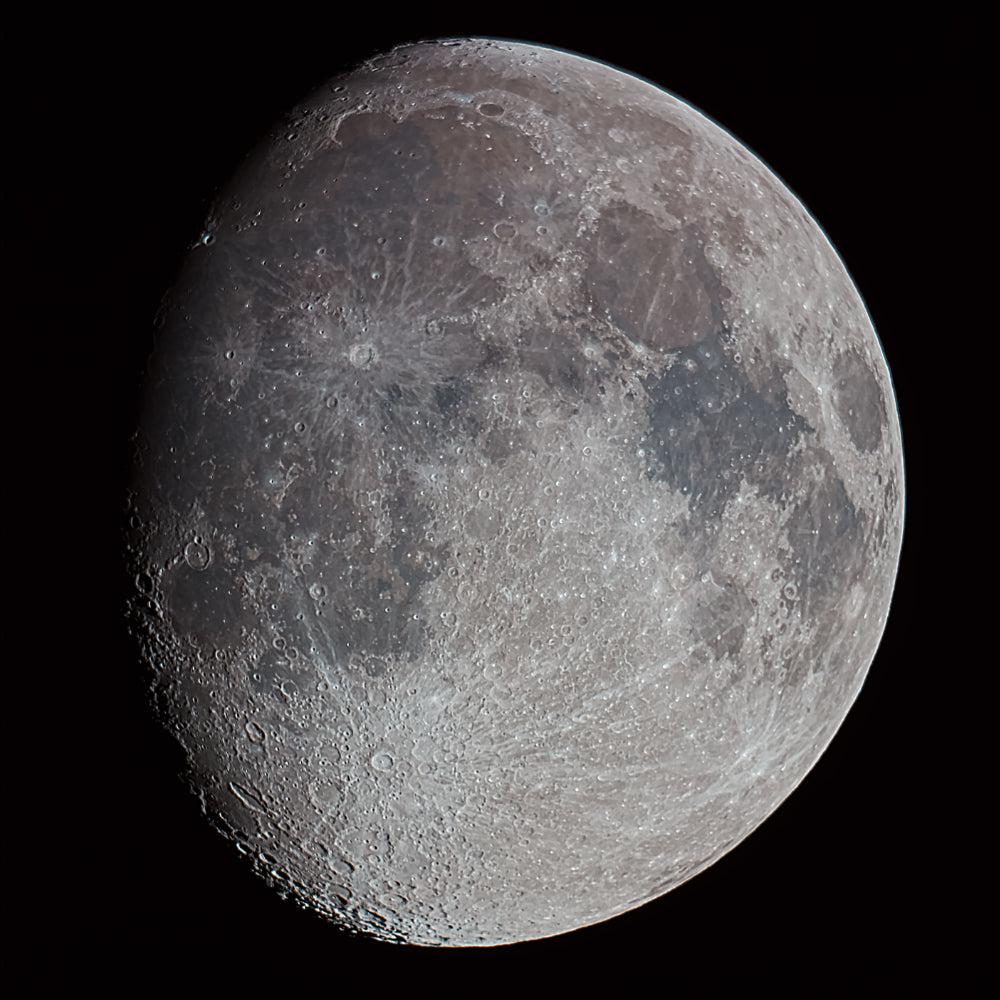
The Gibbous Moon: A Celestial Spectacle
Share
Tonight (18th Feb 25), we're in for a treat as the Moon enters its waning gibbous phase. This particular stage of the lunar cycle offers a brilliant opportunity for amateur stargazers to observe the Moon's surface features in stunning detail.
The gibbous Moon, which occurs roughly every month, is when more than half of the Moon's face is illuminated but it's not quite full. This phase lasts for about a week after the full Moon, which was on 12 February this year. So, if you miss it tonight, don't worry - you'll have a few more evenings to catch this lunar display.
What makes the gibbous Moon so special? It's all about the shadows. As the Sun's light hits the Moon at an angle, it creates long shadows across the lunar surface. These shadows make the Moon's craters and mountain ranges stand out in sharp relief, almost as if someone's used a highlighter pen on the Moon's features.
Even with just a pair of binoculars, you can see an incredible amount of detail. The craters look like they've been carved into the surface with a giant ice cream scoop, and the mountain ranges cast shadows that make them look properly massive.
If you want to get the best view, try to focus on the terminator - that's the line between the light and dark parts of the Moon. That's where you'll see the most dramatic contrasts and the clearest views of the Moon's three-dimensional structure.
Remember, this lunar phase happens every month, so if you miss it this time around, you'll have plenty more chances to catch it. Just keep an eye on the lunar calendar, and about 3-4 days after each full Moon, you'll be treated to this spectacular gibbous view again.
So, whether you're a seasoned Moon-watcher or just fancy a peek at our celestial neighbour, take a moment to look up tonight. It's a reminder of the constant dance of light and shadow playing out in our night sky, month after month.
18 February 2025
